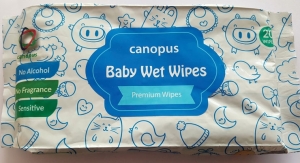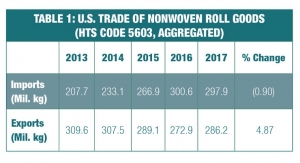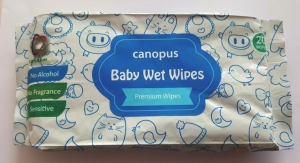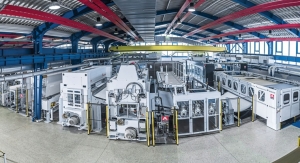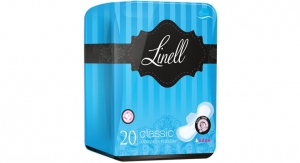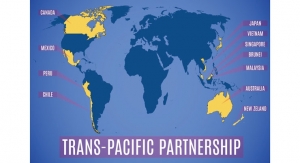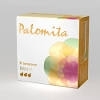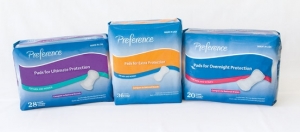Dawnee Giammittorio, Associate Director at The Franken Group07.06.18
As a candidate on the campaign trail, Donald Trump made clear that if he won the presidency, trade issues would be an important part of his agenda. He pledged to tear up or renegotiate existing trade agreements that weren’t to his liking and to strictly enforce trade laws. Thus, it came as no surprise when on January 23 just days after the inauguration, President Trump signed an executive order directing the Office of the United States Trade Representative (USTR) to withdraw the U.S. from the Trans-Pacific Partnership (TPP), which the previous administration had spent years negotiating. What could not have been predicted, however, is that Trump would threaten increased tariffs on some of America’s major trading partners, including close allies, sparking countermeasures and fear of trade wars.
On March 31, 2017, after almost two months in office, the president signed another executive order directing the USTR and the Department of Commerce to study existing trade relationships and then report on systemic trade abuses and non-reciprocal trade practices that harm domestic industries. The report was to focus on countries with which the United States had a trade deficit and to detail the major causes by country and product.
The White House has used findings from the report to develop a trade policy which is focused on enforcement and “leveling the playing field,” which includes balancing trade deficits. To that end, the president has announced two sets of tariffs increases currently wreaking havoc in international trade. The first set of increases, on steel and aluminum, were proposed under Section 232 of the 1962 Trade Act that allows the president to protect U.S. industry for national security reasons. The second set, on Chinese imports, were sparked by Section 301 of the 1974 Trade Act, a unilateral measure not used in decades. The president’s pivot to a protectionist trade policy have confounded businesses, created uncertainty at home and abroad, and prompted doubts about Washington’s commitment to free trade.
President Trump first announced on March 23 that imported steel would be subject to a tariff increase of 25% and aluminum an additional 10%, allegedly to protect domestic industries, which the he deemed critical to national security. However, his administration also granted temporary waivers until June 1 to many American trading partners and used the threat of tariff increases as a bargaining chip in broader trade negotiations.
Indeed, when the steel and aluminum tariffs were announced, the United States and South Korea had been in the midst of finalizing the renegotiation of their United States-Republic of Korea Free Trade Agreement (KORUS FTA). On March 27, the countries announced that an agreement in principle had been reached and that South Korea would be permanently exempt from the 25% additional tariff on imported steel products. In exchange, South Korea agreed to reduce its steel exports to the United States by 30%.
The U.S. initially exempted the EU Canada, and Mexico from the tariffs, but allowed the exemption to expire June 1, on the eve of the G-7 summit in Canada and during a particularly tense renegotiation period of the North American Free Trade Agreement (NAFTA). Canadian Prime Minister Justin Trudeau said it was “insulting” that Trump cited national security as his reason for increasing tariffs on aluminum and steel from Canada and other long-time allies.
The G-7 leaders vowed to retaliate with duties on American imports, sparking fears of a broader trade war. The EU has threatened to target politically sensitive products with tariffs, such as Harley Davidson motorcycles, manufactured in Wisconsin the home state of House Speaker Paul Ryan, and Kentucky bourbon, from the home of Senate Majority Leader Mitch McConnell.
The steel and aluminum tariffs have also complicating the NAFTA negotiations since August 2017. After the U.S. allowed the exemption to expire, Canada immediately responded that it intended to enact countermeasures and published lists of products that were under consideration for 10% tariff increases, including, of interest to the nonwovens industry, tariff category 4818.20, which includes cosmetic and disposable moist wipes. President Trump has said repeatedly he had no preference between withdrawing from NAFTA entirely, renegotiating NAFTA, or negotiating separate agreements with Canada and Mexico. He has not said what he wants specifically in a revised NAFTA, but that may not matter now, as finalizing an overhauled NAFTA just became even more difficult.
In April, President Trump first announced that the U.S. would be targeting Chinese imports with additional 25% duties in response to trade practices as alleged in the USTR’s Section 301 investigation report on China. The Section 301 report alleged that China engaged in unreasonable or discriminatory acts that burden or restrict U.S. commerce, specifically the theft of American intellectual property and the compelled transfer of technology. The president also announced plans to restrict Chinese investment in U.S. high-tech industries and to file a World Trade Organization (WTO) settlement dispute against China for discriminatory licensing practices.
On June 15, the USTR announced it would impose an additional 25% tariff on 818 products imported from China, valued at approximately $34 billion, effective July 6, 2018. Of note to the nonwovens industry, the products include textile and paper manufacturing equipment items. At the same time, the USTR released a second list of 284 products, valued at $16 billion, under consideration for increased tariffs. The second list contained numerous tariff lines falling under Harmonized Tariff Schedule (HTS) Chapter 39 described as “plastics and articles thereof,” including various resins, polymers and films which may impact the nonwovens industry. It also contained additional textile and paper manufacturing equipment items categorized under HTS headings 8419 and 8420. The USTR scheduled a hearing on July 24 for stakeholders before additional duties are applied on products from the second list.
China denied that it has engaged in unfair or illegal trade practices and responded to the June 15 announcement with a list of 659 American products that would be subject to tariffs, expanded from the 106 it originally released in April. Most of the added goods on China’s retaliatory list are agricultural, seafood and energy products. President Trump had said earlier in the day that the U.S. would respond with more yet more tariffs if China retaliated.
Beijing is imposing its tariffs in two steps, just as Washington is doing, in the same amounts, and on the same dates. On July 6, China will levy duties on $34 billion of U.S. products, covering 545 categories ranging from soybeans, pork, chicken, seafood to sport-utility vehicles and electric vehicles. The agricultural products are from states that supported President Trump in the 2016 election. Next China will implement tariffs on additional $16 billion of U.S. goods, with the effective date to be announced, presumably when the U.S. imposes tariffs on a second list of products.
American companies have grown increasingly uneasy about Beijing forcing them into joint ventures with Chinese counterparts, resulting in the transfer of competitive technology to Chinese partners. However, they also worry that tariff increases on Chinese goods may not be the solution and could increase business costs and only trigger more and more retaliation from Beijing. The National Association of Manufacturers issued a statement that “tariffs will cause more problems than they solve” and said a bilateral trade deal with China would be a better solution.
While Republicans have historically supported free trade, they have been mostly quiet while the trade battles brew. Senator Bob Corker (TN-R) accused “the powers that be” in the Senate of blocking his proposed legislation that would limit the president’s power to impose tariffs especially on friendly nations in the name of national security. The U.S. Chamber of Commerce warned that the tariffs are really taxes on the same Americans the trade policy is intended to help. And the billionaire conservative Koch brothers’ Americans for Prosperity group has pledged to spend millions of dollars over the next several years to reduce or eliminate President Trump’s trade barriers. Stay tuned because this is just round one.
On March 31, 2017, after almost two months in office, the president signed another executive order directing the USTR and the Department of Commerce to study existing trade relationships and then report on systemic trade abuses and non-reciprocal trade practices that harm domestic industries. The report was to focus on countries with which the United States had a trade deficit and to detail the major causes by country and product.
The White House has used findings from the report to develop a trade policy which is focused on enforcement and “leveling the playing field,” which includes balancing trade deficits. To that end, the president has announced two sets of tariffs increases currently wreaking havoc in international trade. The first set of increases, on steel and aluminum, were proposed under Section 232 of the 1962 Trade Act that allows the president to protect U.S. industry for national security reasons. The second set, on Chinese imports, were sparked by Section 301 of the 1974 Trade Act, a unilateral measure not used in decades. The president’s pivot to a protectionist trade policy have confounded businesses, created uncertainty at home and abroad, and prompted doubts about Washington’s commitment to free trade.
President Trump first announced on March 23 that imported steel would be subject to a tariff increase of 25% and aluminum an additional 10%, allegedly to protect domestic industries, which the he deemed critical to national security. However, his administration also granted temporary waivers until June 1 to many American trading partners and used the threat of tariff increases as a bargaining chip in broader trade negotiations.
Indeed, when the steel and aluminum tariffs were announced, the United States and South Korea had been in the midst of finalizing the renegotiation of their United States-Republic of Korea Free Trade Agreement (KORUS FTA). On March 27, the countries announced that an agreement in principle had been reached and that South Korea would be permanently exempt from the 25% additional tariff on imported steel products. In exchange, South Korea agreed to reduce its steel exports to the United States by 30%.
The U.S. initially exempted the EU Canada, and Mexico from the tariffs, but allowed the exemption to expire June 1, on the eve of the G-7 summit in Canada and during a particularly tense renegotiation period of the North American Free Trade Agreement (NAFTA). Canadian Prime Minister Justin Trudeau said it was “insulting” that Trump cited national security as his reason for increasing tariffs on aluminum and steel from Canada and other long-time allies.
The G-7 leaders vowed to retaliate with duties on American imports, sparking fears of a broader trade war. The EU has threatened to target politically sensitive products with tariffs, such as Harley Davidson motorcycles, manufactured in Wisconsin the home state of House Speaker Paul Ryan, and Kentucky bourbon, from the home of Senate Majority Leader Mitch McConnell.
The steel and aluminum tariffs have also complicating the NAFTA negotiations since August 2017. After the U.S. allowed the exemption to expire, Canada immediately responded that it intended to enact countermeasures and published lists of products that were under consideration for 10% tariff increases, including, of interest to the nonwovens industry, tariff category 4818.20, which includes cosmetic and disposable moist wipes. President Trump has said repeatedly he had no preference between withdrawing from NAFTA entirely, renegotiating NAFTA, or negotiating separate agreements with Canada and Mexico. He has not said what he wants specifically in a revised NAFTA, but that may not matter now, as finalizing an overhauled NAFTA just became even more difficult.
In April, President Trump first announced that the U.S. would be targeting Chinese imports with additional 25% duties in response to trade practices as alleged in the USTR’s Section 301 investigation report on China. The Section 301 report alleged that China engaged in unreasonable or discriminatory acts that burden or restrict U.S. commerce, specifically the theft of American intellectual property and the compelled transfer of technology. The president also announced plans to restrict Chinese investment in U.S. high-tech industries and to file a World Trade Organization (WTO) settlement dispute against China for discriminatory licensing practices.
On June 15, the USTR announced it would impose an additional 25% tariff on 818 products imported from China, valued at approximately $34 billion, effective July 6, 2018. Of note to the nonwovens industry, the products include textile and paper manufacturing equipment items. At the same time, the USTR released a second list of 284 products, valued at $16 billion, under consideration for increased tariffs. The second list contained numerous tariff lines falling under Harmonized Tariff Schedule (HTS) Chapter 39 described as “plastics and articles thereof,” including various resins, polymers and films which may impact the nonwovens industry. It also contained additional textile and paper manufacturing equipment items categorized under HTS headings 8419 and 8420. The USTR scheduled a hearing on July 24 for stakeholders before additional duties are applied on products from the second list.
China denied that it has engaged in unfair or illegal trade practices and responded to the June 15 announcement with a list of 659 American products that would be subject to tariffs, expanded from the 106 it originally released in April. Most of the added goods on China’s retaliatory list are agricultural, seafood and energy products. President Trump had said earlier in the day that the U.S. would respond with more yet more tariffs if China retaliated.
Beijing is imposing its tariffs in two steps, just as Washington is doing, in the same amounts, and on the same dates. On July 6, China will levy duties on $34 billion of U.S. products, covering 545 categories ranging from soybeans, pork, chicken, seafood to sport-utility vehicles and electric vehicles. The agricultural products are from states that supported President Trump in the 2016 election. Next China will implement tariffs on additional $16 billion of U.S. goods, with the effective date to be announced, presumably when the U.S. imposes tariffs on a second list of products.
American companies have grown increasingly uneasy about Beijing forcing them into joint ventures with Chinese counterparts, resulting in the transfer of competitive technology to Chinese partners. However, they also worry that tariff increases on Chinese goods may not be the solution and could increase business costs and only trigger more and more retaliation from Beijing. The National Association of Manufacturers issued a statement that “tariffs will cause more problems than they solve” and said a bilateral trade deal with China would be a better solution.
While Republicans have historically supported free trade, they have been mostly quiet while the trade battles brew. Senator Bob Corker (TN-R) accused “the powers that be” in the Senate of blocking his proposed legislation that would limit the president’s power to impose tariffs especially on friendly nations in the name of national security. The U.S. Chamber of Commerce warned that the tariffs are really taxes on the same Americans the trade policy is intended to help. And the billionaire conservative Koch brothers’ Americans for Prosperity group has pledged to spend millions of dollars over the next several years to reduce or eliminate President Trump’s trade barriers. Stay tuned because this is just round one.


